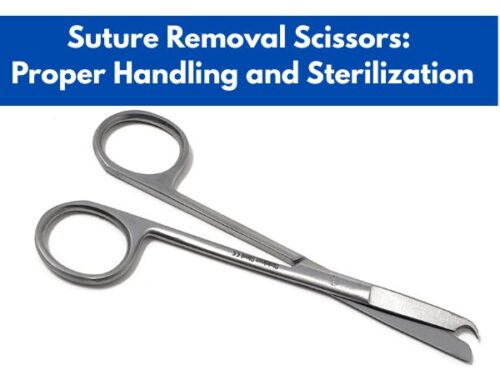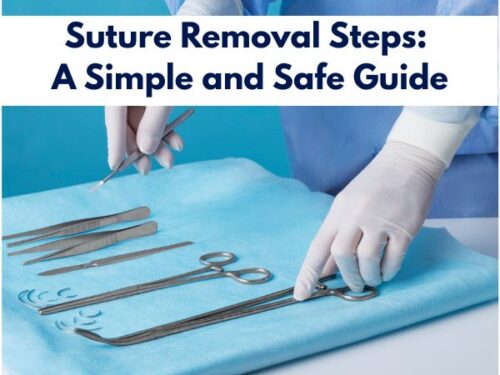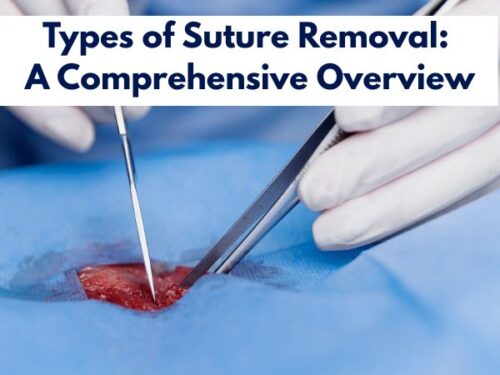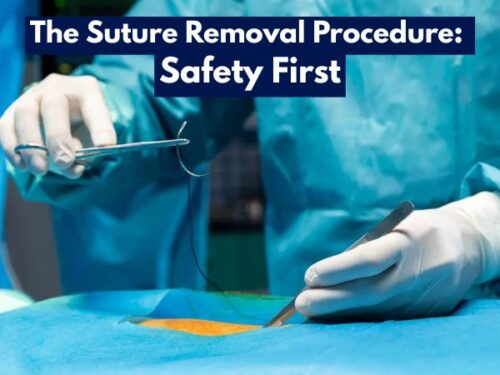The Essential Components of a Portable Medical Kit for Every Traveler
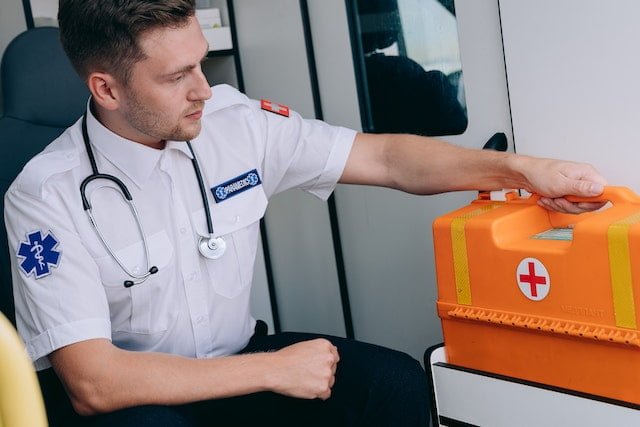
During traveling and sightseeing, a person enthusiastically does more than usual physical activity. While doing so, on the one hand, is beneficial for one’s health, there is also a higher-than-normal risk of getting injured. Therefore, emergency management of such minor injuries or, in some cases, the initial handling of the major ones has to be done on the spot followed by a visit to the hospital based on the necessity. For this purpose, one should always keep a portable medical kit while packing for a trip. Let us understand what a portable medical kit is and what components are to be kept in it.
What is a portable medical kit?
A portable medical kit is a box of medical supplies that are needed to deal with emergencies. It contains items essential to manage a wound or injury, as well as minor diseases which may occur while traveling. Multiple types of bandages, wipes, OTC medications, as well as medication and non-medicated solutions are a part of this kit. Being portable, it is easy to carry around as well.

First-aid kit
Components of a portable medical kit
First and foremost, a portable medical kit must include a first-aid manual. This facilitates the traveler by providing guidance regarding the proper use of each item in a medical kit. Although a traveler should have initial training of some level on how to manage an emergency, still a need may arise for consulting a first-aid manual. Apart from this, the items of a portable medical kit comprise the following components in different sizes:
Bandages, gauzes, and wipes
In case of an injury or trauma, a person needs to be treated immediately using first-aid supplies. A wound should be wiped clean and tied using a bandage of suitable size along with other supplies. These items must include:
- Anti-bacterial wipes
- Anti-septic wipes
- Crepe bandages
- Combined dressing pads (10 cm x 10 cm)
- Non-stick dressing pads (7.5 cm x 10 cm)
- Elastic wrap bandages for the wrist, knee, elbow, and ankle injuries
- Triangular bandages for making an arm sling
- Butterfly bandages
- Gauze swabs and rolls
- 2 and 4-inch pads for dressing larger cuts
- Adhesive dressing strips including Band-Aids
- Adhesive tape to fix the gauze in place
- Hypoallergenic skin tape
- Super glue
- Duct tape
- Scissors and tweezers
- Safety pins to fix the bandages as well as splints
- Towelettes
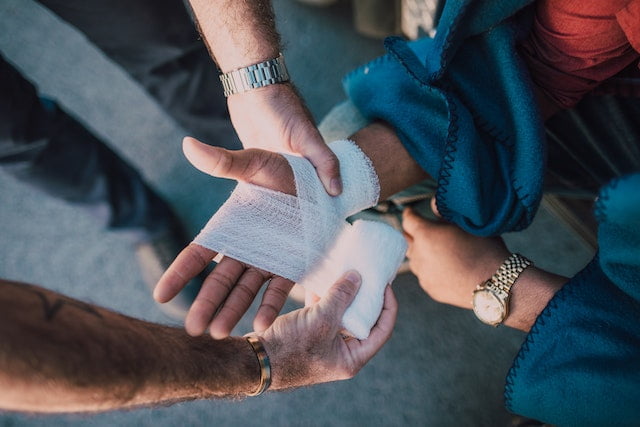
Bandage being applied on a patient’s hand
All of these items essential for a portable medical kit can be purchased at the most affordable rates from Health Supply 770. They have a wide range of products of multiple companies to choose from.
Solutions, gels, and ointments
Different types of solutions, gels, as well as ointments are necessary to be kept in a portable medical kit as they are employed on wounds for different purposes. Some are to be used for washing the wound while others are to minimize the pain and abrasive damage on the skin. These include:
- Petroleum jelly or other lubricant
- Antibiotic ointment
- Antiseptic solution
- Eyewash solution
- Hydrogen peroxide (to clean and disinfect the wound)
- Sunscreen for the prevention of sunburns (SPF 15 or higher)
- Aloe vera gel for the treatment of sunburns
- Hydrocortisone cream for the management of rashes
- Calamine lotion to treat irritation associated with rashes
Over-the-counter (OTC) drugs
It is common to experience body pains followed by fever while traveling. Moreover, headaches, sprains, or strains also occur commonly. Therefore, to manage these complications which may seem minor but can impact the whole traveling experience, one must keep the following OTC medications in the portable medical kit:
- Acetaminophen, Ibuprofen, and Aspirin for headaches, fever, pain, sprains, and strains
- Antacids to manage gastric acidity
- Lozenges for itchy throat and cough
- Anti-histamines as anti-allergy medication
- Medications for motion sickness or anti-nausea drugs
Along with these OTC drugs, epinephrine auto-injector should also be kept in the first-aid box to deal with severe allergy cases.
Moreover, it is necessary to carry the medications which a person has to take every day while traveling. These should be kept in proper numbers so as to last for the days intended to be spent in travel. Furthermore, the patients must keep their prescriptions with them as well.
Insect repellents
An insect repellent should also be kept in the portable medical kit for travelers to make the time spent in nature more enjoyable. For children, insect repellent should not contain more than 10 to 15% DEET. However, for adults, DEET can range from 30 to 50% or can be replaced by up to 15% picaridin.
Warning: Do not use insect repellent on infants i.e. children of age less than or equal to 2 months.
Miscellaneous items
Some of the miscellaneous items which should be present in a traveler’s portable medical kit are as follows:
- Disposable rubber gloves
- Thermometer for taking measurements of fever
- Masks
- Instant-activating disposable cold packs to manage strains and sprains
- Water purification tablets
- An extra pair of prescription glasses or contact lenses
- Alcohol-based hand cleanser (60% alcohol)
Conclusion
It is evident that early management of a wound or injury can have a life-saving impact on a patient. Even if a wound is simply bandaged, there is a significant reduction in the incidence rate of infections at the site of injury. The chances of getting injured are higher than usual while a person is traveling. So, to deal with these possible injuries, it is advised to keep a portable medical kit in the luggage while traveling. By providing earlier management of the wounds, one can reduce the blood flow or decrease the chances of getting an infection.















